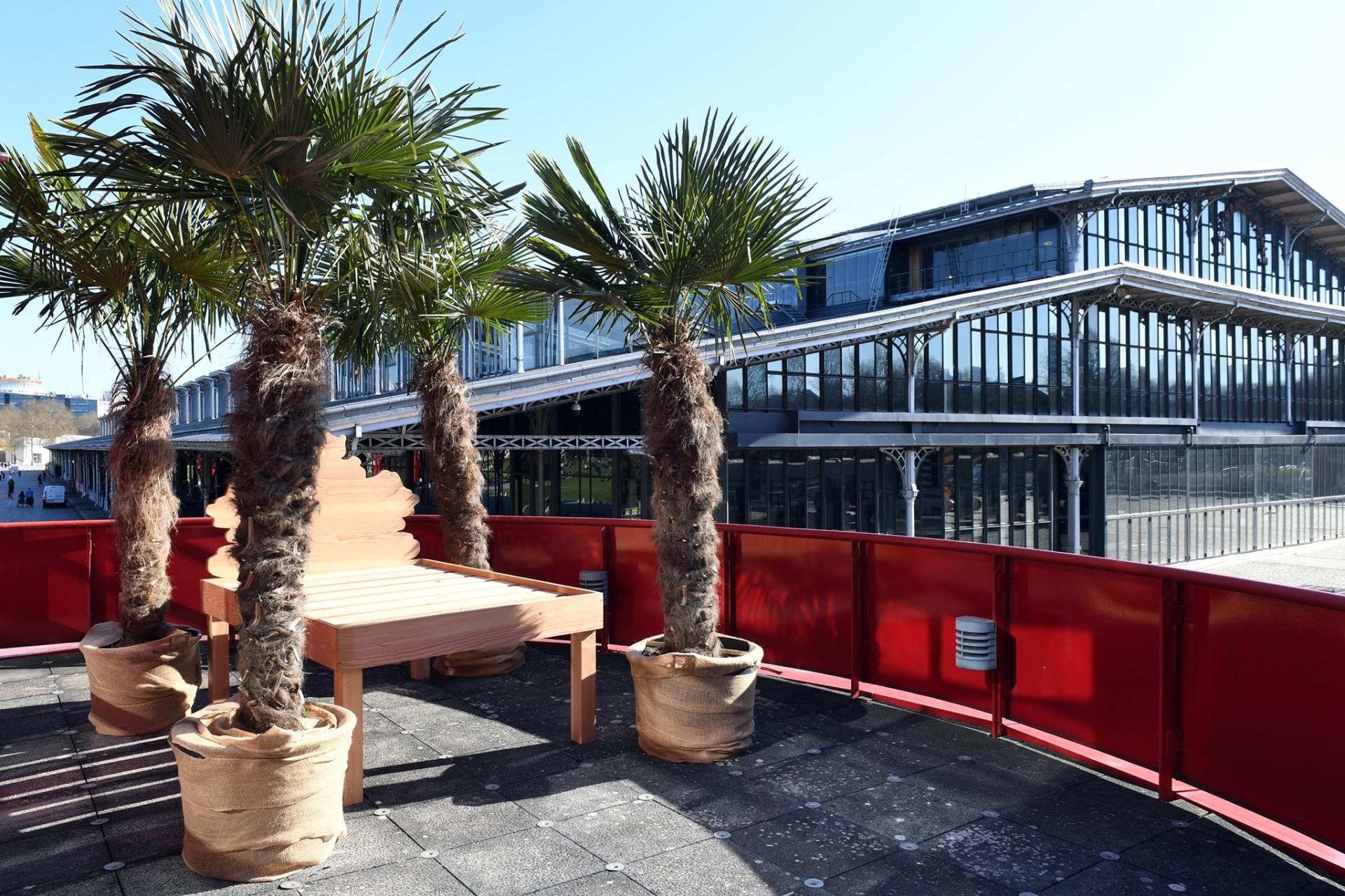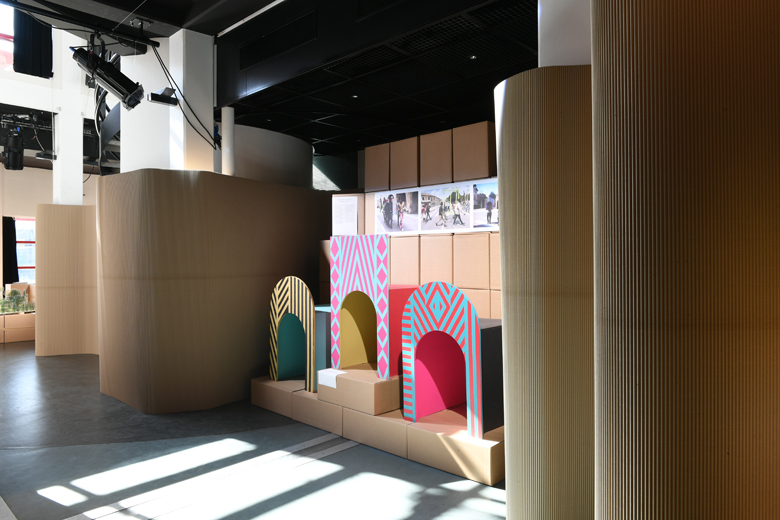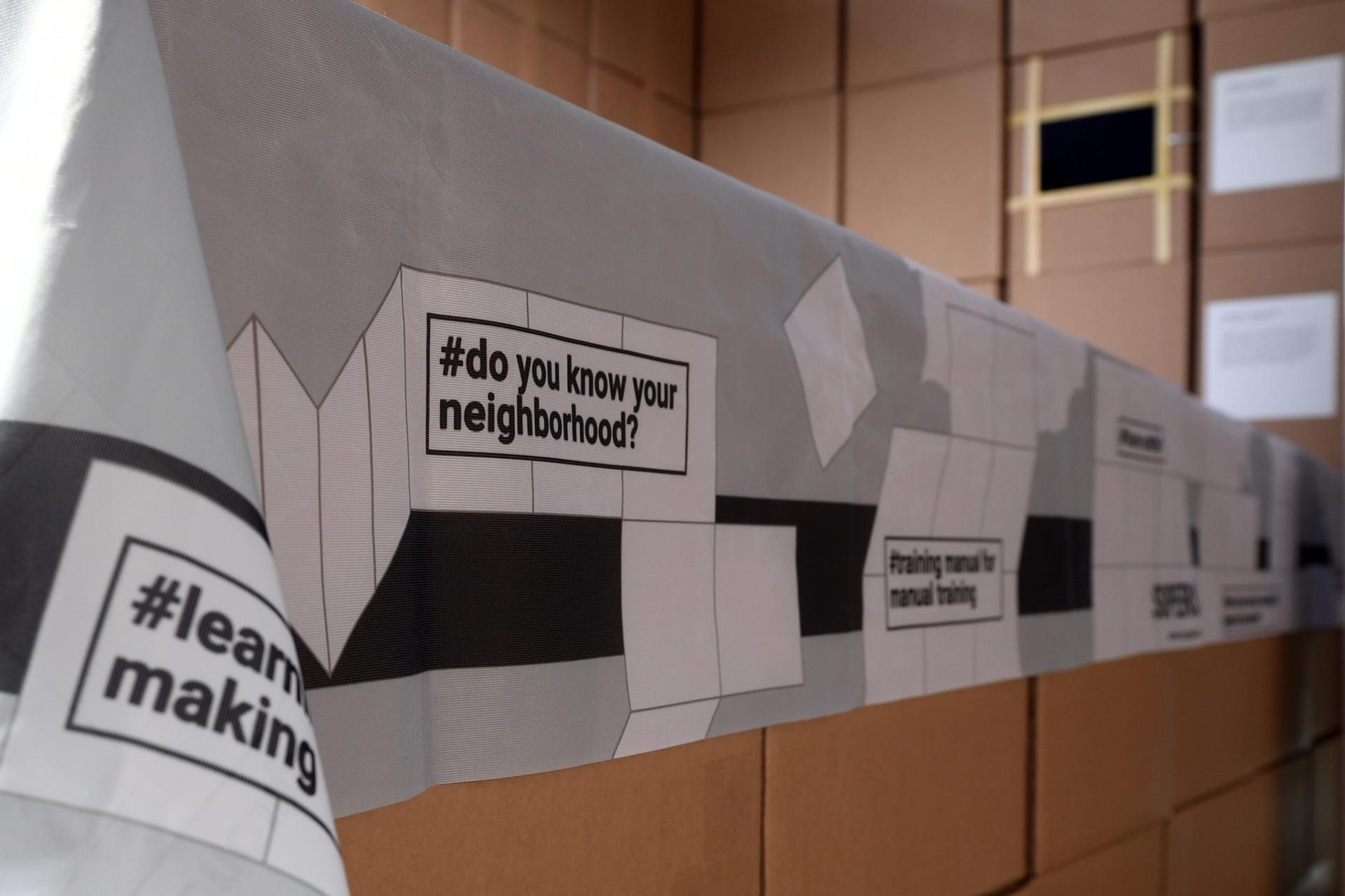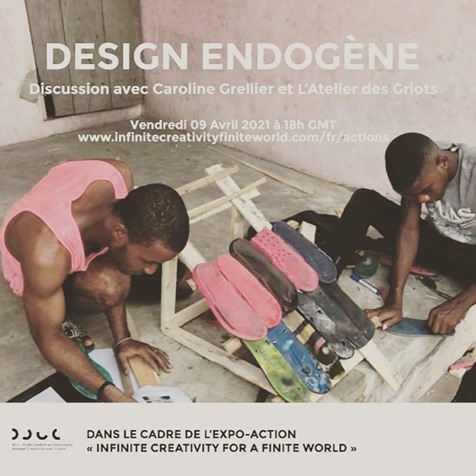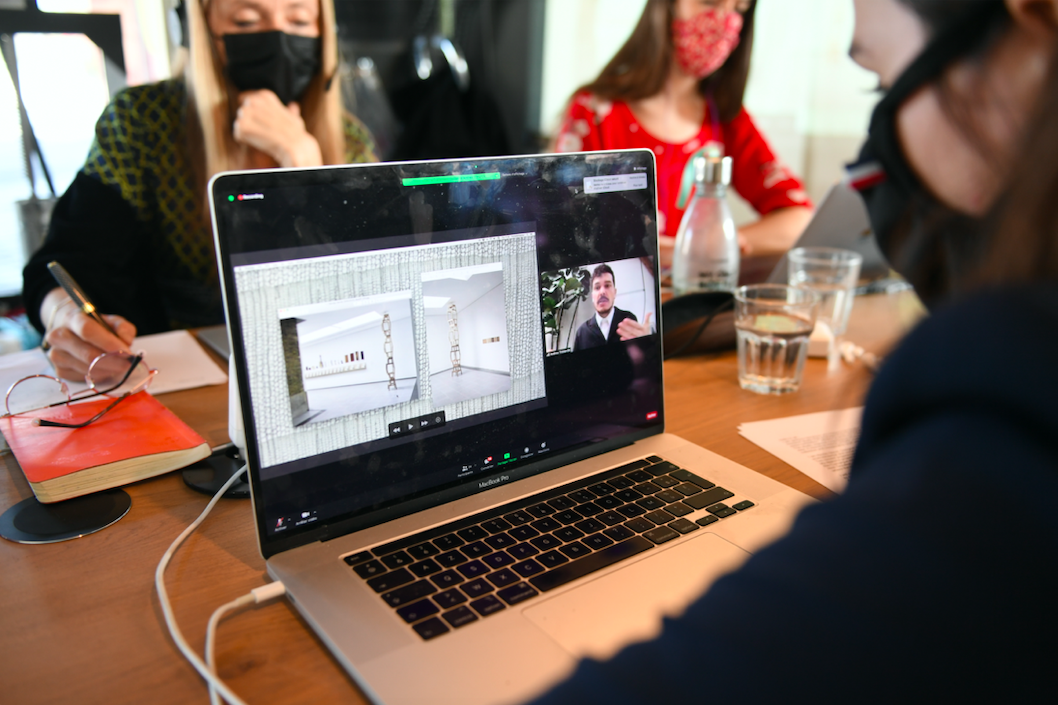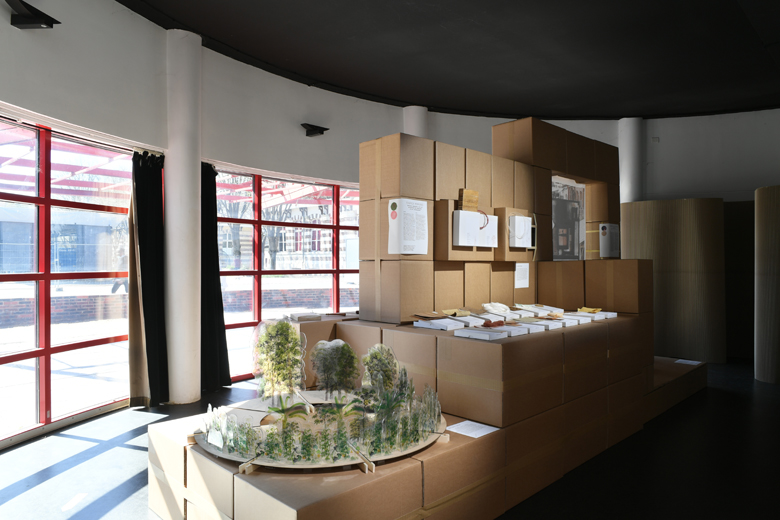ExpoAction
Basic information
Project Title
Full project title
Category
Project Description
The ExpoAction aimed to actively engage in the co-construction of a desirable future, to reveal modest, responsible, restorative and respectful practices whose resilience has been proven by time by offering visitors the opportunity to dive into the heart of ongoing actions carried out by a new generation of designers committed to the long-term enhancement of collective creative impulses. It invited the visitor to experience them and enjoy the benefits of their collective resonance.
Project Region
EU Programme or fund
Which funds
Other Funds
4Cs: From Conflict to Conviviality through Creativity and Culture (https://4cs-conflict-conviviality.eu) is a European Cooperation Project co-funded by the Creative Europe Programme of the European Union. The 4Cs seeks to understand how training and education in art and culture can constitute powerful resources to address the issue of conflict as well as to envision creative ways in which to deal with conflictual phenomena, while contributing to audience development through active participation and co-production. The project aims at advancing the conceptual framework of intercultural dialogue and enhancing the role of public arts and cultural institutions in fostering togetherness through cultural diversity and intercultural encounters.
year: 2017- ongoing (2021)
Description of the project
Summary
The ExpoAction "Infinite Creativity for a Finite World" aims to highlight the unique capacity of design to actively engage in the co-construction of a desirable future, to seek out, reveal and enhance "common sense" through modest and sober practices whose resilience has been proven over time. It affirms the need for a "civic design" that allows the "acting" spectator to experience and measure the daily impact of his or her actions and, above all, to enjoy the benefits of their collective resonance. Starting from socially, politically and economically vulnerable, complex and conflicting situations, co-design is able to direct and enhance the infinite creative impulse of each individual through responsible, concrete and restorative actions, which respect the fragility of the human being, of the living and the finiteness of the planet by composing a sustainable relationship with the other, with time and space, with the environment and the world.The current health crisis is a new opportunity to prove the power of the community and the social link against individual vulnerability. But this unique power is still underestimated despite the number of significant grassroots initiatives that already exist, showing that our infinite creativity can also have positive aspects and lead to the improvement of our coexistence, through the development of solutions that respect human and non-human needs and expectations. It is now urgent to reveal them and to finally connect their significant points through the assumed and responsible creation of a "molecular society based on utility". As designers are among the best specialists in utility they will be key players in the redefinition of the territory of this "infinite utility", in the co-development of its narratives, images, aesthetics and objects. The project was thought as part of the Event/Exhibition 100% L'EXPO, presenting the best young French and international artistic talents.
Key objectives for sustainability
Sustainability was one of the key elements of the project.
The Expo-Action proposed to gather and share a set of projects all in progress whose selection was developed by paying particular attention to the sustainability of its context of action and location. The scenography was composed by a light, dismountable cardboard sculpture with a low economic and environmental impact. It was thought as being part of an ecosystem of available materials, by adopting an aesthetic of displacement and temporary occupation, by proposing a light and modular construction. Cardboard boxes and non-woven paper gave the ExpoAction its aesthetic and structural qualities. Its structures made up a modular and infinitely de-foldable system-work, following the shapes of the building and de-forming itself to favor a clear readability of the different contents of the exhibition. The cardboard scenographic element was a work in itself and participated closely in the purpose of the exhibition project. We chose the cardboard producer for its ecological engagement and at the end of the exhibition the totality of the exhibition was recycled by another specialized company that came on the site with cargo bikes.
Each of the 30 projects exhibited was chosen for its sustainability and deep respect of the limitedness of the planet, starting from the observation that the possibility of choosing among infinite possibilities has been one of the major problems of the Übermensch of the 20th century. This belief has led to abuses of all kinds, to alterations in our way of life. We have destroyed, drained, altered because we have forgotten our state as interdependent beings. The ExpoAction shows that young designers feel that the times of hedonistic individualism are far behind them, that it is more necessary than ever to to share sustainable methodologies of research, investigation and production within a world whose finiteness we all now recognize.
Key objectives for aesthetics and quality
The concept of infinity, as Ludwig Wittgestein asserted, has in itself the meaning of a process that is ongoing and by definition unfinished. The possibility of dealing with the "useful infinity" of the creative process of the selected projects has become an integral part of the "ExpoAction" .This implies an interaction with the public, who will understand the necessary role they can play in contributing to the evolution of these "useful" projects in progress. This relational aesthetic is the result of a mutual dialogue and debate on cultural, natural and pragmatic factors. In addition to 14 selected projects, interdisciplinary groups of ENSAD students carried out applied research and created "desirable presents" within four workshops led by the designers Alexia Venot (in partnership with the Semeuse des Laboratoires d'Aubervilliers), Cédric Carles (Atelier 21), Lucas Dauvergne (in partnership with La Réserve des Arts) and Nicolas Verschaeve (in partnership with Vive les Groues). The global aesthetic of the projects is to be considered according to Jacques Rancière’s idea of aesthetic : a manifestation of the arts of daily living and of aesthetics as politics. The complexity of each Action in terms of relationships and of processes that constitute them needs a specific aesthetic to exist and to be experienced. This understanding of the concept of aesthetics is the translation of qualities such as slowness, complexity and (inter)relationships. These qualities are also sustainable and define the framework of an emerging aesthetics, a kind of bottom up new sensitivity which is arising at the same time in many different places around the world and that becomes evident by exhibiting them all together. With the ExpoAction we have in a sort created what Rancière calls "aesthetic revolution", where each person is invited to take part to the public sphere in democratic and visible way.
Key objectives for inclusion
The projects presented in the exhibition affirm the need for a "civic design" which, as Jacques Rancière would say, allows the "acting" spectator to experience and "see" the daily impact of his or her actions and above all to enjoy the benefits of their collective resonance. Because this action defines his political vocation, his power as a citizen, the exhibition includes several "acting works" by students of the Ecole des Arts Décoratifs together with "more mature" works of professionals. This act of inclusivity aims to make them understand and measure the impact that their philanthropic work can have on their respective territories of action, if their work is accompanied by a dialogue, an active and constructive confrontation with the other members of the same territory.These Actions witness the current need of designers and artists to rewrite and argue our collective memory, to situate and weave plural stories whose beauty and richness remain infinite. Their collective and relational creation will form the basis of our future history and of a design without borders, whose objects are polysemic, open, made of successive layers, talkative, imperfect.
A 3-day "Diversity Actions" international workshop was organized for design students inviting them to initiate direct actions for diversity and inclusion within their schools and universities in partnership with the design and social innovation research team of the University of Nîmes. To accompany them a number of teachers/designers "committed" to the cause of diversity (Bio-diversity, body and cultural diversity)will participate in the workshop. Among them : Virginia Tassinari (philosopher and design teacher), FORMAFANTASMA(designers, founders of the GEO-DESIGN department at the Design Academy in Eindhoven), Dimitri Zephir and Florian Dach, (designers, founders of the dach&zephir studio and teachers at the Ecole de Condé and the Ecole Boulle), Marginal Studio( designers and teachers), etc.
Results in relation to category
The ICCFW ExpoAction is EnsAD's fourth (and final) contribution to the European (Creative Europe) 4Cs research project (from Conflict to Conviviality through Creativity and Culture - www.4cs-conflict-conviviality.eu). The research project aims to explore how culture and creativity can be effective resources to reflect on emerging forms of conflict and to imagine creative solutions to address and resolve them. The 4Cs project aims to redefine the conceptual framework for intercultural dialogue and to assert the role of public art and design institutions in promoting collective action to foster cultural diversity and facilitate intercultural encounters. One year after the conference "Faire projet, faire ensemble" which brought together some fifty international experts at the Ecole des Arts Décoratifs, showing the role of design as an intellectual, creative and humanistic process, capable of both fuelling reflection and generating concrete and fluid actions and initiatives, The ExpoAction "Infinite creativity for a finite world" will enable individuals, communities and society in general to understand the urgency of reconnecting with the present and to experience it by becoming the actors of a new art of living, which they will have conceived together. At the 2020 conference, the sharing of new knowledge, the methodological comparison for the co-development of new tools and the joint work on promising projects for the future contributed to what Victor Margolin would have called a "framework for action". This framework for action is the founding element of this ExpoAction which brings together, albeit on a small scale, ideals and beliefs about how the world should be. These multiple projections will allow the public, and society in general, to reconnect with the present and encourage action towards a new way of life, in a particularly complex period of transition from a "parasitic society" to a "symbiotic society".
How Citizens benefit
The ExpoAction intends to show and experience a new form of symbiotic society, sensitive and without borders, where the singularity and diversity of each individual will contribute to the regeneration of the whole, a society capable to articulate its resources and creative potential to adapt and react locally to the constant environmental changes, through the co-creation of new participative, modest, porous and multiple objects/tools. It may seem almost anachronistic and absurd to have dared an exhibition based on the principle of Action in a world paralyzed by the health crisis, by the action of a microscopic organism. Yet it was precisely in this context that many of us were able to appreciate the interdependence that links us to each other and the importance of coordinating our actions with a common goal. It is for this reason that we wanted to highlight the fundamental role of each Actor in his or her commitment against the status quo and for the common good, and how his or her "mission" is more effective and intelligible when it is accompanied, valued and replicated by the community. In any case, the projects presented in the Expo Action are specific long-term actions, plural, participative and generative Actions that will continue to exist and that constitute for each actor a kind of life research. Even if the ExpoAction couldn't be experienced in the first person by the public but only by professionals, I want to hope that its digital version and the 6 actions shared with a selected public at the Villette Makerz can serve as a prototype for other future ExpoActions. Let's hope that these humble, necessary, responsible, restorative Actions, respectful of the fragility of humans and living beings, co-initiated by international designers and artists, can be explored, questioned, modulated, shared... ad infinitum!
Innovative character
The ExpoAction showed for the first time in the history of French design the urgency of young designers to take action to question and reframe our world. This collective exhibition witnesses the current need of designers and artists to rewrite and argue our collective memory, to situate and weave plural stories whose beauty and richness remain infinite. Their collective and relational creation will form the basis of our future history and of a design without borders, whose objects are polysemic, open, made of successive layers, talkative, imperfect. Most of the Actions reveal the need for designers and artists to project themselves into speculative scenarios off the beaten track to co-create situated objects and design tools capable of improving the quality of life in local development contexts. This implies a careful and benevolent collaborative work with civil society to question the identity of symbols, objects, monuments and public spaces and a precise identification of the plurality of its actors. Many of these holistic Actions show the generosity of a new generation of designers and artists in their willingness to offer interactive, experiential and participatory knowledge learning, mixing practical skills with strategic thinking necessary to face the ecological, economic and social challenges of the 21st century. The areas of application of their research are numerous as it involves a radical and global change in established approaches to knowledge. They promote the reconnection with fundamental urban and non urban issues, stimulate participative and regenerative reflections on the local environment and arise awareness of the hidden links between human and non-human beings. From an environmental perspective they contribute to the restorative care of the ecosystem and to a mitigation of the effects of climate change thanks to a ‘positive development’ that envisions a more holistic approach to life.

